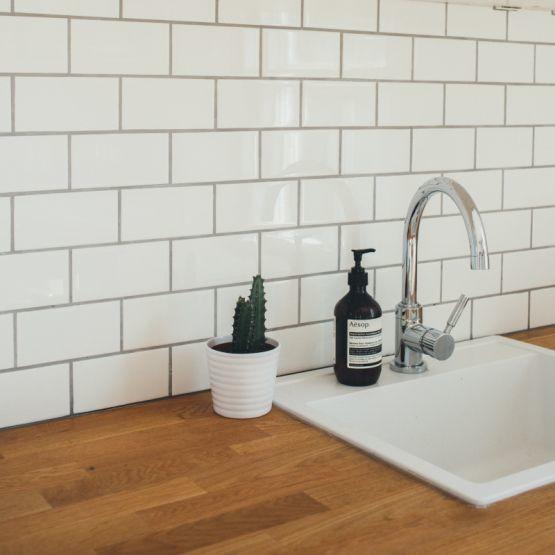How to maintain wooden kitchen worktops
Whether you have oak, walnut or timber surfaces, these natural woods add beautiful warmth to your kitchen and home. Maintaining them therefore should be a priority. Take a look at our expert advice and find out how to keep your worktops in tip-top condition:

Oiling
Oiling is essential in keeping your worktops in the best possible condition. Most kitchen worktops will be pre-oiled but once they are fitted in your home, it is then down to you to ensure you know what you need to do to protect them. So, how do you know if your kitchen worktop needs oiling?
A simple water test can show you this. If you splash a few drops of water onto the wooden surface and they take the shape of a small bead, your surfaces are still protected. If the bead shape is weak or the water drops form more of a puddle, this is a clear sign you need to re-oil your wooden surfaces. Faded or washed-out colour of the wooden surface is also a tell-tale sign.
The best way to oil your worktop is to firstly make sure the surface is clean. When spotless, pour the wooden surface oil directly onto the wood and with a clean, dry, soft cotton cloth, and work it in the direction of the grain aiming for a thin, even covering across the surface.
Our top tip? Rubio Monocoat Oil Plus 2C is the world's first one coat finish for almost all interior wooden surfaces and will save you time whilst not affecting the quality of your wooden worktops.
Osmo TopOil is also a high quality solutions for softwood worktops but will require two coats. For hardwoods such as walnut, Osmo Wood Wax Finish Extra Thin is recommended.
Prevent water damage
Oiling regularly can help against surface water damage, but not sustained damage from a leaking tap or pipe. Keep an eye out for leaks from pipes, especially near the sink area, and also damp patches as anything like this can damage the worktop causing it to look warped or swollen. When it gets to this point, it is difficult to get the worktop back to its original quality.
If any water does spill on the surface from cooking or overfilling your kettle, get it wiped up as fast as possible. Getting in the habit early on will help your wooden surfaces in the long run.


Keep it clean
Don’t believe the myths that you need to clean wooden worktops with specific products that cost a fortune. A wooden worktop is an easy thing to clean – there is nothing fancy about it.
Just make sure the cloth is damp (not wet as you don’t want water trails) and is a material that can quickly and easily wipe down surfaces. If you are concerned about bacteria, a simple off the shelf solution is fine but be sure to wipe it down like you would any other worktop surface.
Minimise wear and tear
Scratches are almost an inevitability on a wooden worktop. However, you can always try to avoid throwing keys, rings and coins onto the surface as well as other metal objects. If you do end up scratching or staining your wooden worktop, don’t panic. Small scratches and marks can usually be successfully removed with a bit of light sanding and polishing. All good suppliers of wooden worktops should provide a maintenance kit with sandpaper and polishing pads.
Remember, wooden worktops can also burn, especially if you place hot objects on the surface for a short space of time, so try to avoid this and invest in a pan-stand to prevent burning.









